Fidelity-Controllable Extreme Image Compression with Generative Adversarial Networks
Shoma Iwai,
Tomo Miyazaki,
Yoshihiro Sugaya,
Shinichiro Omachi

Auto-TLDR; GAN-based Image Compression at Low Bitrates
Similar papers
Adaptive Image Compression Using GAN Based Semantic-Perceptual Residual Compensation
Ruojing Wang, Zitang Sun, Sei-Ichiro Kamata, Weili Chen

Auto-TLDR; Adaptive Image Compression using GAN based Semantic-Perceptual Residual Compensation
Abstract Slides Poster Similar
A NoGAN Approach for Image and Video Restoration and Compression Artifact Removal
Mameli Filippo, Marco Bertini, Leonardo Galteri, Alberto Del Bimbo

Auto-TLDR; Deep Neural Network for Image and Video Compression Artifact Removal and Restoration
Explorable Tone Mapping Operators
Su Chien-Chuan, Yu-Lun Liu, Hung Jin Lin, Ren Wang, Chia-Ping Chen, Yu-Lin Chang, Soo-Chang Pei
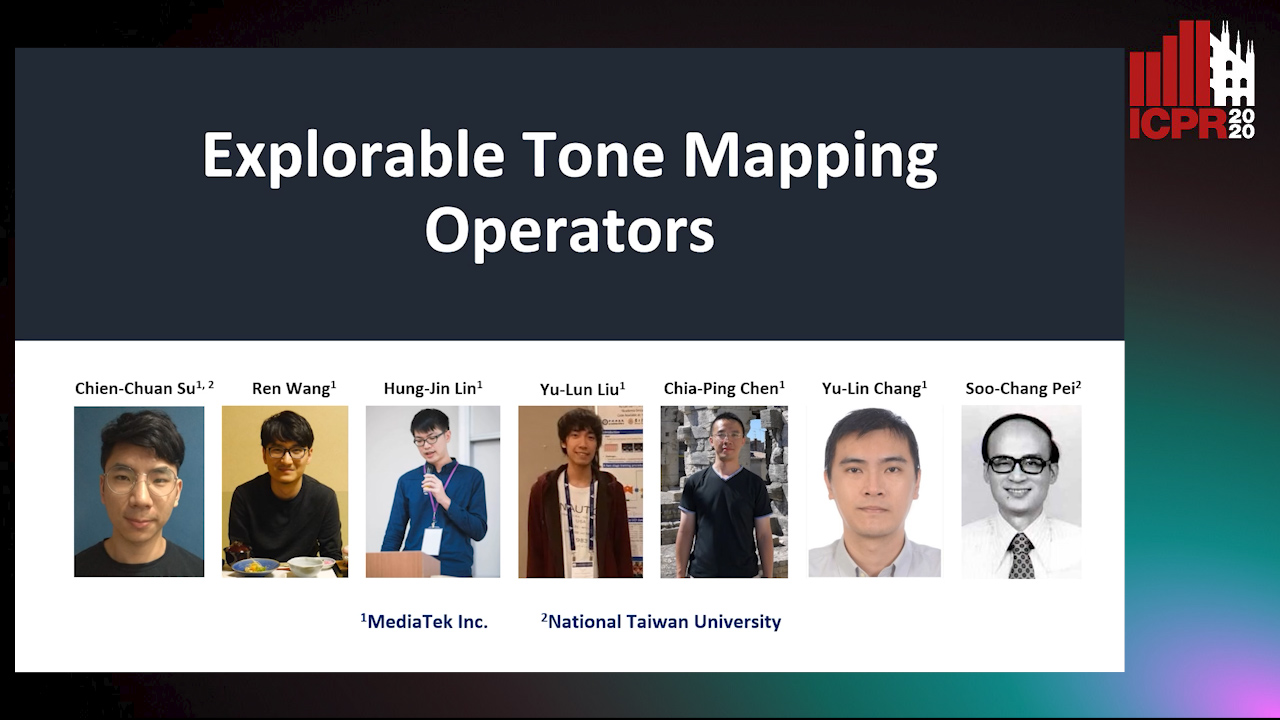
Auto-TLDR; Learning-based multimodal tone-mapping from HDR images
Abstract Slides Poster Similar
GAN-Based Image Deblurring Using DCT Discriminator
Hiroki Tomosada, Takahiro Kudo, Takanori Fujisawa, Masaaki Ikehara
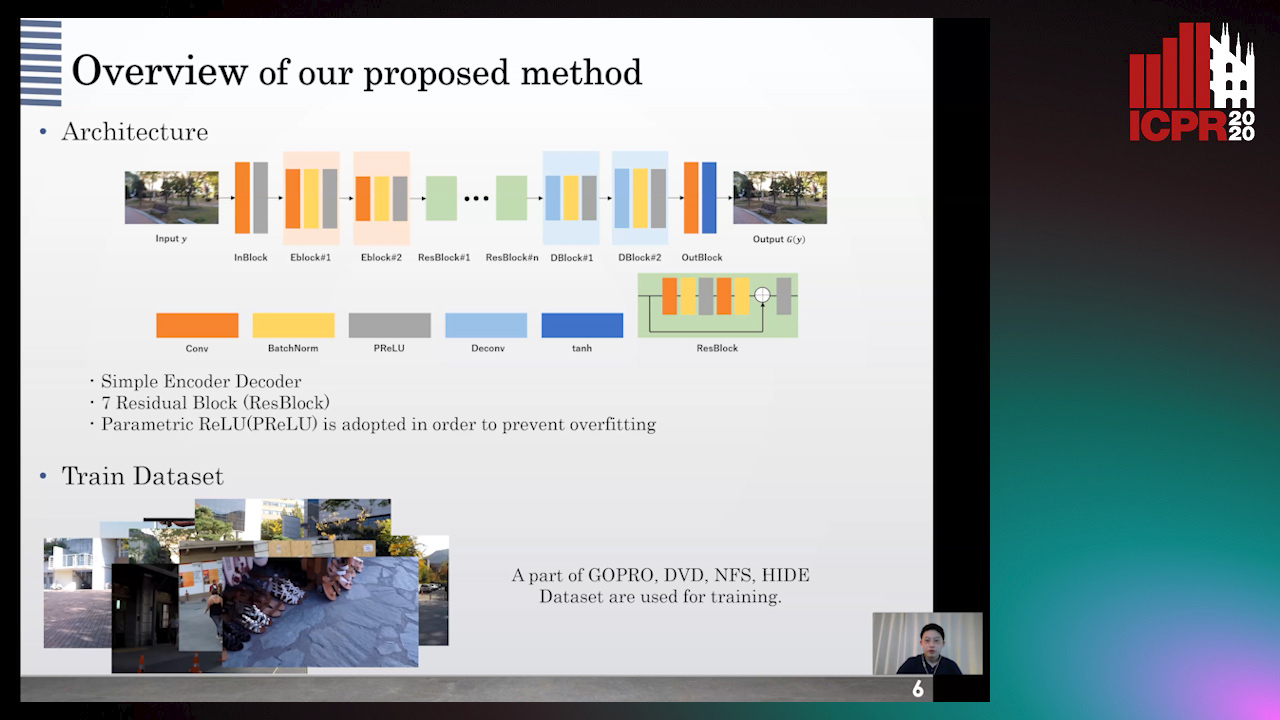
Auto-TLDR; DeblurDCTGAN: A Discrete Cosine Transform for Image Deblurring
Abstract Slides Poster Similar
High Resolution Face Age Editing
Xu Yao, Gilles Puy, Alasdair Newson, Yann Gousseau, Pierre Hellier

Auto-TLDR; An Encoder-Decoder Architecture for Face Age editing on High Resolution Images
Abstract Slides Poster Similar
AVAE: Adversarial Variational Auto Encoder
Antoine Plumerault, Hervé Le Borgne, Celine Hudelot

Auto-TLDR; Combining VAE and GAN for Realistic Image Generation
Abstract Slides Poster Similar
Local Facial Attribute Transfer through Inpainting
Ricard Durall, Franz-Josef Pfreundt, Janis Keuper

Auto-TLDR; Attribute Transfer Inpainting Generative Adversarial Network
Abstract Slides Poster Similar
Multi-Laplacian GAN with Edge Enhancement for Face Super Resolution

Auto-TLDR; Face Image Super-Resolution with Enhanced Edge Information
Abstract Slides Poster Similar
Boosting High-Level Vision with Joint Compression Artifacts Reduction and Super-Resolution
Xiaoyu Xiang, Qian Lin, Jan Allebach

Auto-TLDR; A Context-Aware Joint CAR and SR Neural Network for High-Resolution Text Recognition and Face Detection
Abstract Slides Poster Similar
Mask-Based Style-Controlled Image Synthesis Using a Mask Style Encoder
Jaehyeong Cho, Wataru Shimoda, Keiji Yanai

Auto-TLDR; Style-controlled Image Synthesis from Semantic Segmentation masks using GANs
Abstract Slides Poster Similar
Deep Iterative Residual Convolutional Network for Single Image Super-Resolution
Rao Muhammad Umer, Gian Luca Foresti, Christian Micheloni

Auto-TLDR; ISRResCNet: Deep Iterative Super-Resolution Residual Convolutional Network for Single Image Super-resolution
Tarsier: Evolving Noise Injection inSuper-Resolution GANs
Baptiste Roziere, Nathanaël Carraz Rakotonirina, Vlad Hosu, Rasoanaivo Andry, Hanhe Lin, Camille Couprie, Olivier Teytaud

Auto-TLDR; Evolutionary Super-Resolution using Diagonal CMA
Abstract Slides Poster Similar
Semantic-Guided Inpainting Network for Complex Urban Scenes Manipulation
Pierfrancesco Ardino, Yahui Liu, Elisa Ricci, Bruno Lepri, Marco De Nadai

Auto-TLDR; Semantic-Guided Inpainting of Complex Urban Scene Using Semantic Segmentation and Generation
Abstract Slides Poster Similar
Free-Form Image Inpainting Via Contrastive Attention Network
Xin Ma, Xiaoqiang Zhou, Huaibo Huang, Zhenhua Chai, Xiaolin Wei, Ran He

Auto-TLDR; Self-supervised Siamese inference for image inpainting
Combining GANs and AutoEncoders for Efficient Anomaly Detection
Fabio Carrara, Giuseppe Amato, Luca Brombin, Fabrizio Falchi, Claudio Gennaro

Auto-TLDR; CBIGAN: Anomaly Detection in Images with Consistency Constrained BiGAN
Abstract Slides Poster Similar
A GAN-Based Blind Inpainting Method for Masonry Wall Images
Yahya Ibrahim, Balázs Nagy, Csaba Benedek

Auto-TLDR; An End-to-End Blind Inpainting Algorithm for Masonry Wall Images
Abstract Slides Poster Similar
MBD-GAN: Model-Based Image Deblurring with a Generative Adversarial Network

Auto-TLDR; Model-Based Deblurring GAN for Inverse Imaging
Abstract Slides Poster Similar
Coherence and Identity Learning for Arbitrary-Length Face Video Generation
Shuquan Ye, Chu Han, Jiaying Lin, Guoqiang Han, Shengfeng He

Auto-TLDR; Face Video Synthesis Using Identity-Aware GAN and Face Coherence Network
Abstract Slides Poster Similar
Phase Retrieval Using Conditional Generative Adversarial Networks
Tobias Uelwer, Alexander Oberstraß, Stefan Harmeling

Auto-TLDR; Conditional Generative Adversarial Networks for Phase Retrieval
Abstract Slides Poster Similar
Deep Universal Blind Image Denoising

Auto-TLDR; Image Denoising with Deep Convolutional Neural Networks
Cascade Attention Guided Residue Learning GAN for Cross-Modal Translation
Bin Duan, Wei Wang, Hao Tang, Hugo Latapie, Yan Yan

Auto-TLDR; Cascade Attention-Guided Residue GAN for Cross-modal Audio-Visual Learning
Abstract Slides Poster Similar
Adversarial Knowledge Distillation for a Compact Generator
Hideki Tsunashima, Shigeo Morishima, Junji Yamato, Qiu Chen, Hirokatsu Kataoka

Auto-TLDR; Adversarial Knowledge Distillation for Generative Adversarial Nets
Abstract Slides Poster Similar
GarmentGAN: Photo-Realistic Adversarial Fashion Transfer
Amir Hossein Raffiee, Michael Sollami

Auto-TLDR; GarmentGAN: A Generative Adversarial Network for Image-Based Garment Transfer
Abstract Slides Poster Similar
Unsupervised Contrastive Photo-To-Caricature Translation Based on Auto-Distortion
Yuhe Ding, Xin Ma, Mandi Luo, Aihua Zheng, Ran He

Auto-TLDR; Unsupervised contrastive photo-to-caricature translation with style loss
Abstract Slides Poster Similar
SECI-GAN: Semantic and Edge Completion for Dynamic Objects Removal
Francesco Pinto, Andrea Romanoni, Matteo Matteucci, Phil Torr

Auto-TLDR; SECI-GAN: Semantic and Edge Conditioned Inpainting Generative Adversarial Network
Abstract Slides Poster Similar
Image Inpainting with Contrastive Relation Network
Xiaoqiang Zhou, Junjie Li, Zilei Wang, Ran He, Tieniu Tan

Auto-TLDR; Two-Stage Inpainting with Graph-based Relation Network
Small Object Detection by Generative and Discriminative Learning
Yi Gu, Jie Li, Chentao Wu, Weijia Jia, Jianping Chen

Auto-TLDR; Generative and Discriminative Learning for Small Object Detection
Abstract Slides Poster Similar
Single Image Deblurring Using Bi-Attention Network

Auto-TLDR; Bi-Attention Neural Network for Single Image Deblurring
Thermal Image Enhancement Using Generative Adversarial Network for Pedestrian Detection
Mohamed Amine Marnissi, Hajer Fradi, Anis Sahbani, Najoua Essoukri Ben Amara

Auto-TLDR; Improving Visual Quality of Infrared Images for Pedestrian Detection Using Generative Adversarial Network
Abstract Slides Poster Similar
Attention2AngioGAN: Synthesizing Fluorescein Angiography from Retinal Fundus Images Using Generative Adversarial Networks
Sharif Amit Kamran, Khondker Fariha Hossain, Alireza Tavakkoli, Stewart Lee Zuckerbrod
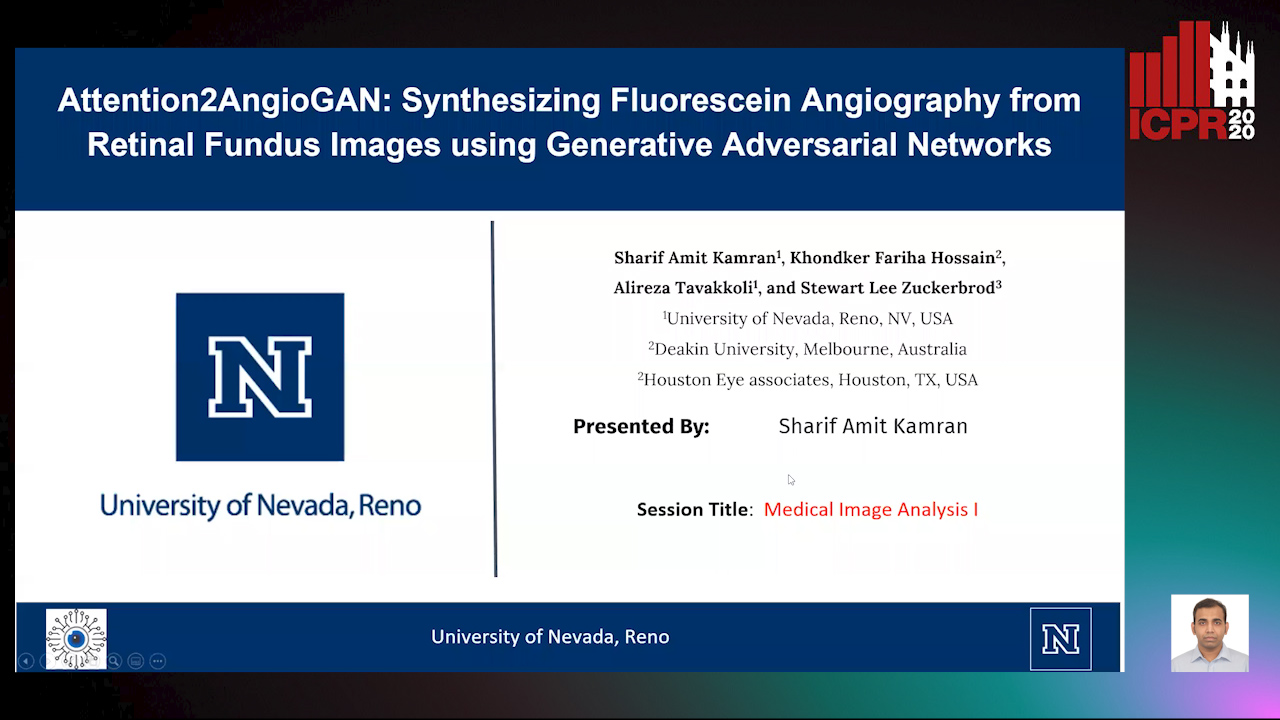
Auto-TLDR; Fluorescein Angiography from Fundus Images using Attention-based Generative Networks
Abstract Slides Poster Similar
The Role of Cycle Consistency for Generating Better Human Action Videos from a Single Frame

Auto-TLDR; Generating Videos with Human Action Semantics using Cycle Constraints
Abstract Slides Poster Similar
JUMPS: Joints Upsampling Method for Pose Sequences
Lucas Mourot, Francois Le Clerc, Cédric Thébault, Pierre Hellier

Auto-TLDR; JUMPS: Increasing the Number of Joints in 2D Pose Estimation and Recovering Occluded or Missing Joints
Abstract Slides Poster Similar
SIDGAN: Single Image Dehazing without Paired Supervision
Pan Wei, Xin Wang, Lei Wang, Ji Xiang, Zihan Wang

Auto-TLDR; DehazeGAN: An End-to-End Generative Adversarial Network for Image Dehazing
Abstract Slides Poster Similar
Learning Disentangled Representations for Identity Preserving Surveillance Face Camouflage
Jingzhi Li, Lutong Han, Hua Zhang, Xiaoguang Han, Jingguo Ge, Xiaochu Cao

Auto-TLDR; Individual Face Privacy under Surveillance Scenario with Multi-task Loss Function
TinyVIRAT: Low-Resolution Video Action Recognition
Ugur Demir, Yogesh Rawat, Mubarak Shah

Auto-TLDR; TinyVIRAT: A Progressive Generative Approach for Action Recognition in Videos
Abstract Slides Poster Similar
Attentional Wavelet Network for Traditional Chinese Painting Transfer
Rui Wang, Huaibo Huang, Aihua Zheng, Ran He
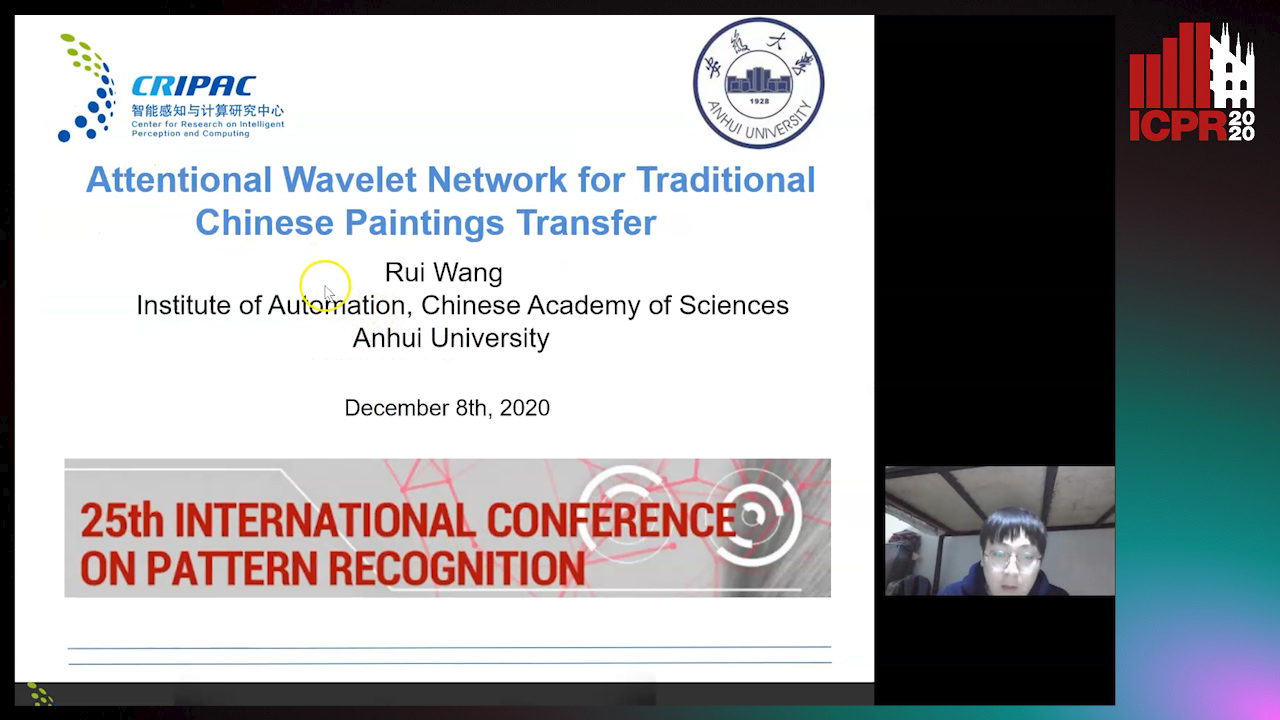
Auto-TLDR; Attentional Wavelet Network for Photo to Chinese Painting Transfer
Abstract Slides Poster Similar
Towards Artifacts-Free Image Defogging
Gabriele Graffieti, Davide Maltoni

Auto-TLDR; CurL-Defog: Learning Based Defogging with CycleGAN and HArD
Selective Kernel and Motion-Emphasized Loss Based Attention-Guided Network for HDR Imaging of Dynamic Scenes
Yipeng Deng, Qin Liu, Takeshi Ikenaga
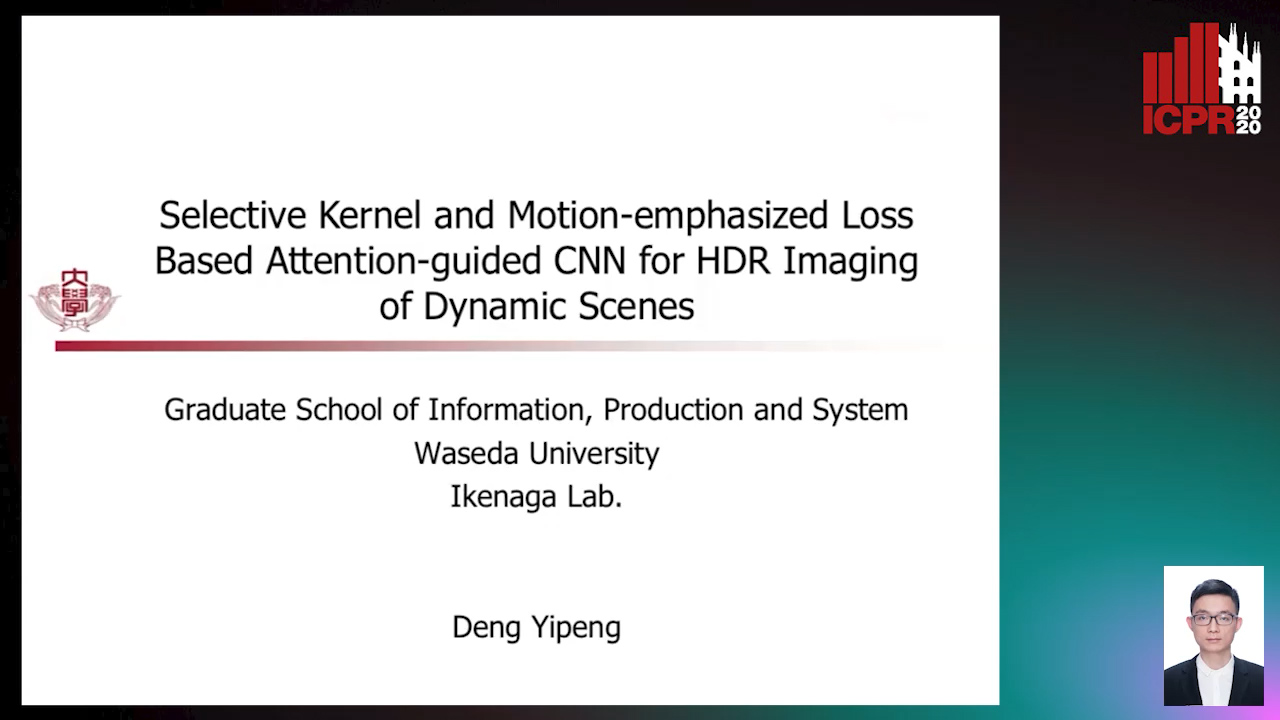
Auto-TLDR; SK-AHDRNet: A Deep Network with attention module and motion-emphasized loss function to produce ghost-free HDR images
Abstract Slides Poster Similar
Detail Fusion GAN: High-Quality Translation for Unpaired Images with GAN-Based Data Augmentation
Ling Li, Yaochen Li, Chuan Wu, Hang Dong, Peilin Jiang, Fei Wang

Auto-TLDR; Data Augmentation with GAN-based Generative Adversarial Network
Abstract Slides Poster Similar
SATGAN: Augmenting Age Biased Dataset for Cross-Age Face Recognition
Wenshuang Liu, Wenting Chen, Yuanlue Zhu, Linlin Shen

Auto-TLDR; SATGAN: Stable Age Translation GAN for Cross-Age Face Recognition
Abstract Slides Poster Similar
Continuous Learning of Face Attribute Synthesis
Ning Xin, Shaohui Xu, Fangzhe Nan, Xiaoli Dong, Weijun Li, Yuanzhou Yao

Auto-TLDR; Continuous Learning for Face Attribute Synthesis
Abstract Slides Poster Similar
Joint Compressive Autoencoders for Full-Image-To-Image Hiding
Xiyao Liu, Ziping Ma, Xingbei Guo, Jialu Hou, Lei Wang, Gerald Schaefer, Hui Fang
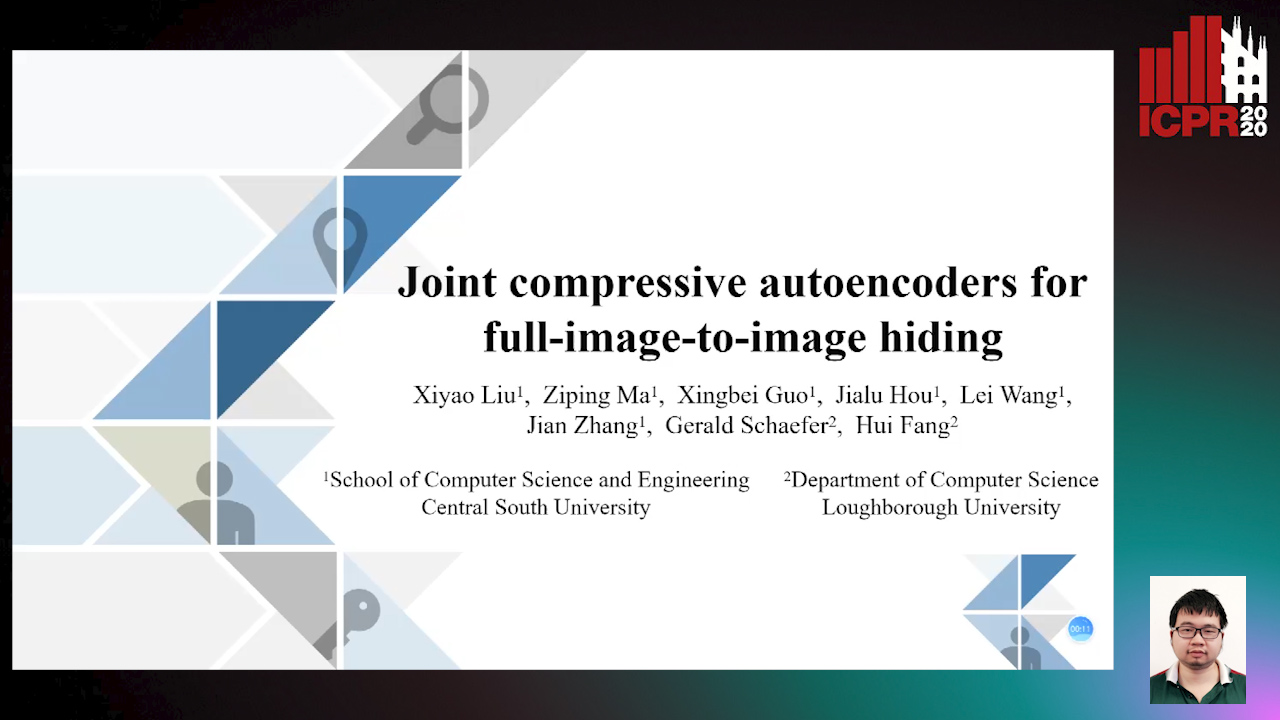
Auto-TLDR; J-CAE: Joint Compressive Autoencoder for Image Hiding
Abstract Slides Poster Similar
UCCTGAN: Unsupervised Clothing Color Transformation Generative Adversarial Network
Shuming Sun, Xiaoqiang Li, Jide Li

Auto-TLDR; An Unsupervised Clothing Color Transformation Generative Adversarial Network
Abstract Slides Poster Similar
Hierarchically Aggregated Residual Transformation for Single Image Super Resolution

Auto-TLDR; HARTnet: Hierarchically Aggregated Residual Transformation for Multi-Scale Super-resolution
Abstract Slides Poster Similar
GAN-Based Gaussian Mixture Model Responsibility Learning
Wanming Huang, Yi Da Xu, Shuai Jiang, Xuan Liang, Ian Oppermann

Auto-TLDR; Posterior Consistency Module for Gaussian Mixture Model
Abstract Slides Poster Similar
Disentangle, Assemble, and Synthesize: Unsupervised Learning to Disentangle Appearance and Location
Hiroaki Aizawa, Hirokatsu Kataoka, Yutaka Satoh, Kunihito Kato

Auto-TLDR; Generative Adversarial Networks with Structural Constraint for controllability of latent space
Abstract Slides Poster Similar
Local-Global Interactive Network for Face Age Transformation
Jie Song, Ping Wei, Huan Li, Yongchi Zhang, Nanning Zheng

Auto-TLDR; A Novel Local-Global Interaction Framework for Long-span Face Age Transformation
Abstract Slides Poster Similar
Small Object Detection Leveraging on Simultaneous Super-Resolution
Hong Ji, Zhi Gao, Xiaodong Liu, Tiancan Mei

Auto-TLDR; Super-Resolution via Generative Adversarial Network for Small Object Detection